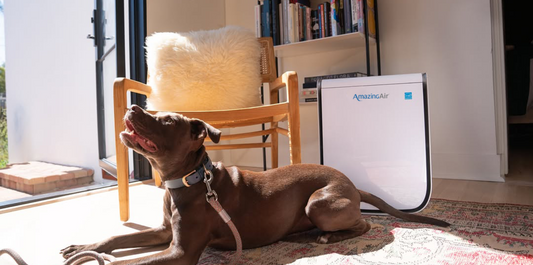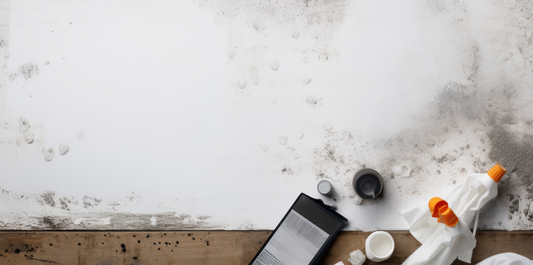While Nat King Cole’s classic song might have us dreaming of chestnuts roasting on an open fire, have you ever stopped to think about what else is happening in those crackling flames? Sure, they're the heart of winter warmth and family gatherings, but what about the health costs?
As we cosy up by the hearth this season, it's important to consider the smoke filling our rooms. Did you know that those comforting fires are actually pumping harmful pollutants into our home? From tiny particles that can get deep into our lungs to various toxins that could end up in our bloodstream, wood smoke is more than just an annoying smell—it’s a serious health risk.
Ever noticed how the room gets stuffy and the air thick during a long evening by the fire? Ever wondered if this much-loved tradition is quietly affecting your family’s health, especially for those with asthma or heart conditions?
With our fireplaces crackling away, we need to face these issues head-on. How can we keep the warmth but lose the danger? This article aims to highlight the hidden risks of fireplace smoke and give you practical advice to keep your home safe and healthy all winter long.
The dangers of fireplace smoke
Fireplace smoke contains several harmful pollutants that can significantly impact our health. Let's look at some of the key risks associated with wood smoke.
Fine Particulate Matter (PM2.5)
Wood smoke is a significant source of fine particulate matter, known as PM2.5, which consists of tiny particles less than 2.5 micrometres in diameter. These particles are small enough to penetrate the lungs and enter the bloodstream, posing serious health risks. Exposure to PM2.5 has been linked to respiratory and cardiovascular diseases, including asthma, bronchitis, heart attacks, and strokes. A study published in BMC Public Health highlighted that exposure to wood smoke affects inflammation, coagulation, and possibly lipid peroxidation, indicating potential cardiovascular risks.
Toxic chemicals
In addition to particulate matter, wood smoke contains several toxic air pollutants, including benzene, formaldehyde, acrolein, and polycyclic aromatic hydrocarbons (PAHs). These substances are known or suspected to cause cancer and can lead to other serious health issues. For instance, exposure to benzene can lead to blood disorders, including anaemia and excessive bleeding, as well as leukaemia.
Carbon monoxide
Carbon monoxide (CO) is a colourless, odourless gas produced by the incomplete combustion of wood. When inhaled, CO can interfere with the body's ability to transport oxygen, leading to symptoms such as headaches, dizziness, confusion, and, in severe cases, can be fatal. It's particularly dangerous in poorly ventilated spaces, where CO can accumulate to harmful levels.
Asthma and allergies
Wood smoke can exacerbate asthma symptoms and trigger asthma attacks. Fine particles in the smoke can irritate the airways, leading to increased coughing, wheezing, and shortness of breath. Individuals with existing respiratory conditions, such as asthma or chronic obstructive pulmonary disease (COPD), are particularly vulnerable.
Additionally, exposure to wood smoke can worsen allergies, leading to increased symptoms like sneezing, nasal congestion, and eye irritation. A report by the Washington State Department of Ecology noted that wood smoke worsens asthma, emphysema, pneumonia, and bronchitis.
Understanding these dangers is crucial for taking appropriate measures to protect your health and your family's health when using a fireplace.
Tips and prevention
When using a wood-burning fire, it’s essential to take steps to reduce the risks associated with fireplace smoke. Here are some practical tips to keep your home safe and your air clean:
Burn dry, seasoned wood
Always use well-seasoned wood that has been split, covered, and stored for at least six months. Dry wood burns more efficiently, producing less smoke and fewer harmful emissions. It also reduces creosote buildup in your chimney. The Vermont Department of Environmental Conservation warns that burning wet wood wastes energy, releasing pollution into the air and creosote into your chimney, which can create a fire hazard.
Maintain your fireplace and chimney
Regular maintenance is essential for both safety and efficiency. Have a professional inspect and clean your fireplace and chimney every year to prevent dangerous creosote buildup, which can lead to chimney fires. The Spruce recommends cleaning your chimney annually to keep it safe and functional.
Ventilate your home
Ensure proper ventilation by opening a window while using the fireplace. This allows fresh air in and helps expel smoke and pollutants. Ventilation improves indoor air quality and reduces the concentration of harmful substances.
Install carbon monoxide detectors
Carbon monoxide is a deadly, odourless gas. Install carbon monoxide detectors on every home floor, especially near sleeping areas, to alert you to dangerous levels. The American Lung Association recommends carbon monoxide detectors to protect your family from this silent threat.
Use an air purifier

Invest in an air purifier with a HEPA filter to capture airborne particles and pollutants. Research indicates that these purifiers are more effective than ion-releasing models, making them a reliable choice for controlling indoor particulate pollution.
Taking preventive measures is crucial in protecting your family’s health from the risks associated with fireplace smoke. By burning dry, seasoned wood, maintaining your fireplace, ensuring proper ventilation, installing carbon monoxide detectors, and using air purifiers, you can minimise exposure to harmful pollutants. These simple steps will allow you to enjoy the warmth and comfort of your fire while ensuring a healthier environment for you and your loved ones throughout the colder months.






